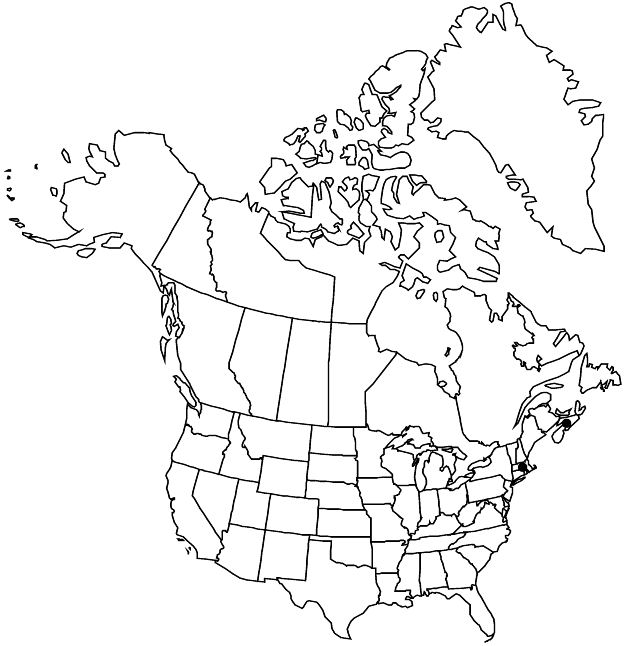Difference between revisions of "Potentilla erecta"
Nomencl. Bot, 152. 1797.
FNA>Volume Importer |
imported>Volume Importer |
||
| (5 intermediate revisions by 2 users not shown) | |||
| Line 12: | Line 12: | ||
|label=Introduced | |label=Introduced | ||
}} | }} | ||
| − | |basionyms={{Treatment/ID/ | + | |basionyms={{Treatment/ID/Basionym |
|name=Tormentilla erecta | |name=Tormentilla erecta | ||
|authority=Linnaeus | |authority=Linnaeus | ||
| + | |rank=species | ||
| + | |publication_title=Sp. Pl. | ||
| + | |publication_place=1: 500. 1753 | ||
}} | }} | ||
|synonyms= | |synonyms= | ||
| Line 31: | Line 34: | ||
|elevation=0–100 m | |elevation=0–100 m | ||
|distribution=N.S.;Mass.;Europe;w Asia;n Africa;Atlantic Islands (Azores). | |distribution=N.S.;Mass.;Europe;w Asia;n Africa;Atlantic Islands (Azores). | ||
| + | |introduced=true | ||
|discussion=<p>Although included here, <i>Potentilla erecta</i> is questionably extant as a naturalized species in North America and is not currently known from Newfoundland where historically reported. It is a medicinal plant called tormentil, high in tannins and strongly astringent. A tea made from the tuberous rootstock is widely used in Europe and parts of Asia for diarrhea, dysentery, sore throats, and related problems. A decoction is a mild antibiotic used for cuts and minor infections, especially as an anti-inflammatory for gingivitis and other gum problems. The rootstock is used as a red dye.</p><!-- | |discussion=<p>Although included here, <i>Potentilla erecta</i> is questionably extant as a naturalized species in North America and is not currently known from Newfoundland where historically reported. It is a medicinal plant called tormentil, high in tannins and strongly astringent. A tea made from the tuberous rootstock is widely used in Europe and parts of Asia for diarrhea, dysentery, sore throats, and related problems. A decoction is a mild antibiotic used for cuts and minor infections, especially as an anti-inflammatory for gingivitis and other gum problems. The rootstock is used as a red dye.</p><!-- | ||
--><p>Another synonym with a long history of use is <i>Potentilla</i> tormentilla Necker, illegitimate by virtue of being superfluous.</p> | --><p>Another synonym with a long history of use is <i>Potentilla</i> tormentilla Necker, illegitimate by virtue of being superfluous.</p> | ||
| Line 41: | Line 45: | ||
-->{{#Taxon: | -->{{#Taxon: | ||
name=Potentilla erecta | name=Potentilla erecta | ||
| − | |||
|authority=(Linnaeus) Raeuschel | |authority=(Linnaeus) Raeuschel | ||
|rank=species | |rank=species | ||
| Line 57: | Line 60: | ||
|publication year=1797 | |publication year=1797 | ||
|special status=Introduced | |special status=Introduced | ||
| − | |source xml=https:// | + | |source xml=https://bitbucket.org/aafc-mbb/fna-data-curation/src/2e0870ddd59836b60bcf96646a41e87ea5a5943a/coarse_grained_fna_xml/V9/V9_195.xml |
|subfamily=Rosaceae subfam. Rosoideae | |subfamily=Rosaceae subfam. Rosoideae | ||
|tribe=Rosaceae tribe Potentilleae | |tribe=Rosaceae tribe Potentilleae | ||
Latest revision as of 22:54, 5 November 2020
Rootstocks erect to horizontal, irregularly thickened, 1–8 cm. Stems mostly ascending to erect, not flagelliform, openly branched, not rooting at nodes, (0.5–)1–5(–7) dm. Basal leaves ephemeral, usually ternate, 2–15 cm; petiole (1–)3–13 cm, long hairs sparse to common, appressed, 0.5–1 mm, stiff, glands absent; leaflets 3(–5), central ± obovate to cuneate, (0.5–)1–2 × (0.3–)1–1.5 cm, distal 1/2–2/3 of margin incised ± 1/3 to midvein, teeth 2–4 per side, surfaces similar, green (abaxial sometimes paler), glabrate or sparsely to moderately hairy. Cauline leaves (0–)1–3(–7) proximal to 1st flowering node, expanded at anthesis, usually ternate, rarely palmate (or appearing so because of leafletlike stipules), (0.5–)1–3 cm; petiole usually 0 cm; leaflets 3(–5), usually much narrower than those of basal leaves, narrowly cuneate to oblanceolate, (0.5–)1–3 × (0.2–)0.5–1 cm, distal 1/3–2/3 of margin incised ± 1/2 to midvein, teeth 2–4(–6) per side, apex usually obtuse to acute. Inflorescences 3–30-flowered, cymose, open. Pedicels (1–)2–3(–5) cm. Flowers 4(–5)-merous; epicalyx bractlets ovate to narrowly elliptic, 1.5–4 × 0.5–1 mm, much smaller than to sometimes equal to sepals; hypanthium 1.5–2.5 mm diam.; sepals (2–)3–5 mm, apex broadly acute; petals (2–)4–6 × (1.5–)3–6 mm, apex ± retuse; stamens 15–20, filaments 2–3.8 mm, anthers 0.4–0.6 mm; carpels 4–8(–20), styles 0.9–1.4 mm. Achenes 1.2–2 mm, rugose. 2n = 28 (Eurasia).
Phenology: Flowering unknown.
Habitat: Moist, mossy flats and slopes, acidic soil
Elevation: 0–100 m
Distribution

Introduced; N.S., Mass., Europe, w Asia, n Africa, Atlantic Islands (Azores).
Discussion
Although included here, Potentilla erecta is questionably extant as a naturalized species in North America and is not currently known from Newfoundland where historically reported. It is a medicinal plant called tormentil, high in tannins and strongly astringent. A tea made from the tuberous rootstock is widely used in Europe and parts of Asia for diarrhea, dysentery, sore throats, and related problems. A decoction is a mild antibiotic used for cuts and minor infections, especially as an anti-inflammatory for gingivitis and other gum problems. The rootstock is used as a red dye.
Another synonym with a long history of use is Potentilla tormentilla Necker, illegitimate by virtue of being superfluous.
Selected References
None.